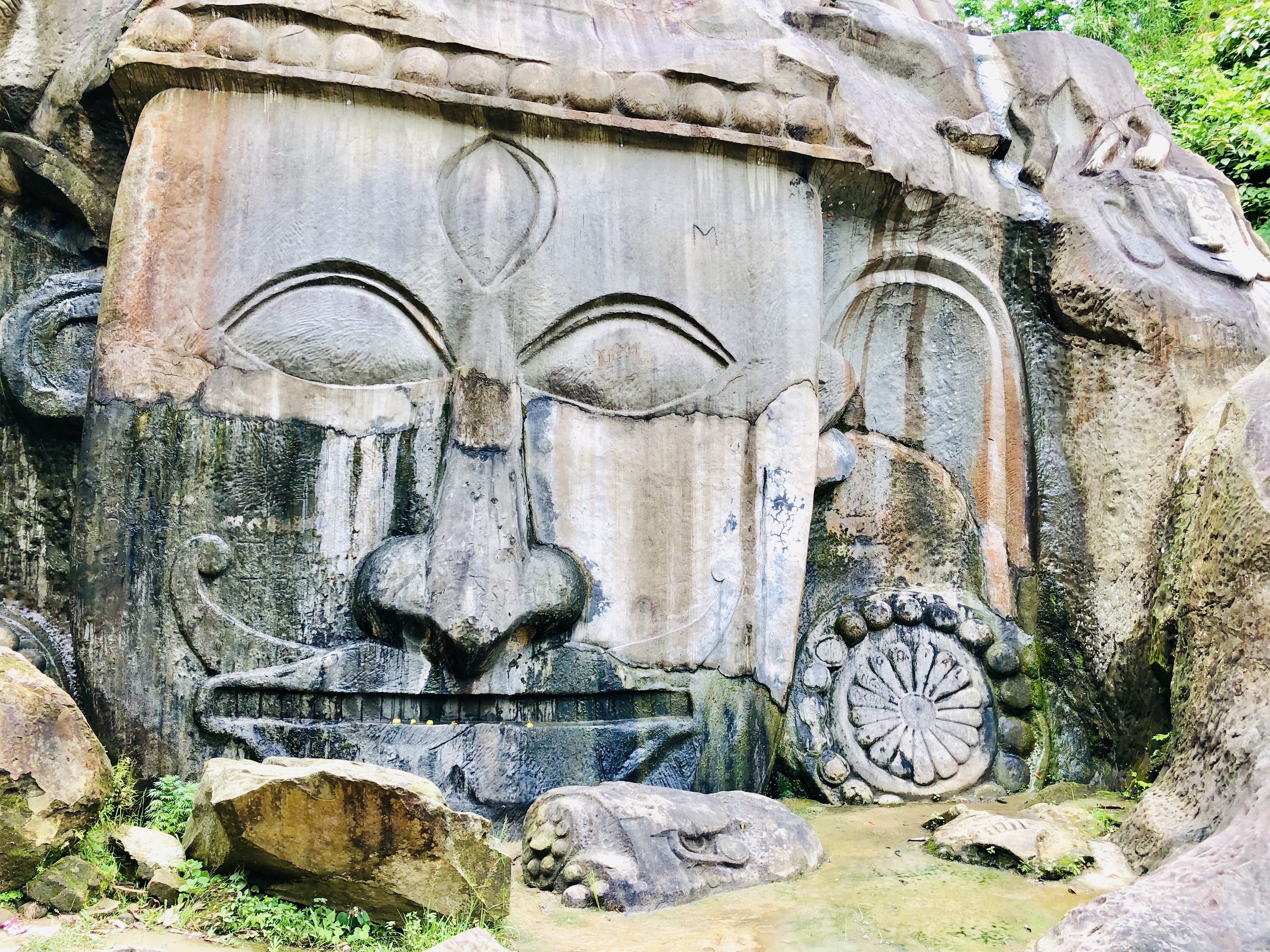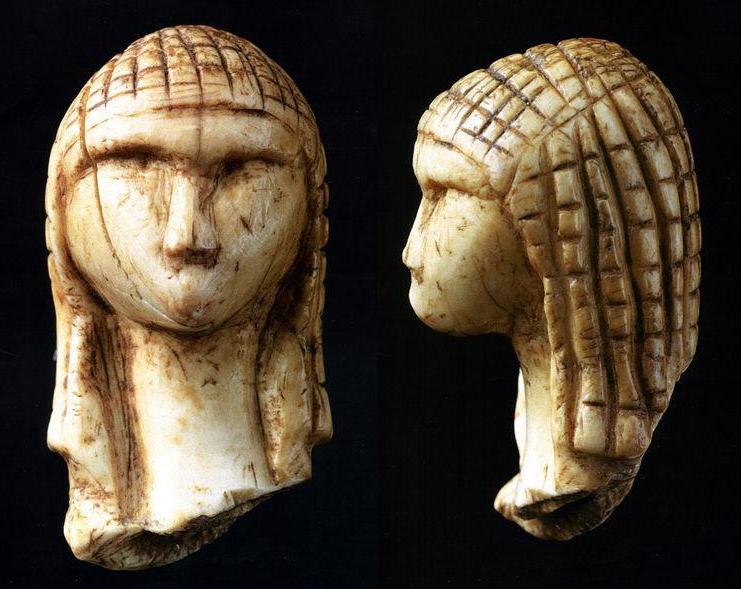|
Khamlangba
Khamlangba is a deity in Sanamahism, the indigenous religion of Manipur. He is the God of iron, mining, metallurgy, steel manufacturing, hunting and war. His occupation is the extraction of the iron ores and the manufacture of steel. The ''Khamlangba Thenlon'' text mentions about his skills of iron metallurgy and blacksmith in ancient Kakching kingdom. Description God Khamlangba is the miner of iron ores and the manufacturer of steel. He is worshipped for peace and prosperity in the kingdom. He is revered for protecting people from diseases and death. He drives away the evil spirits from the state. He belongs to the class of Sylvan Gods (Umang Lais). The Kangjeirol text says that God Khamlangba was one of the divine polo players who played the divine polo match of the gods. Mythology In the creation myth, God Khamlangba was grown out of Atiya Sidaba. He was a great hunter, warrior and miner. He lived with Goddess Huimu Leima and a son named Amudon was born to them ... [...More Info...] [...Related Items...] OR: [Wikipedia] [Google] [Baidu] |
Umang Lai
Umang Lai () refers to a group of ancient Meitei deities of the traditional Meitei religion (Sanamahism) who are worshipped as the local guardians of particular areas, especially sacred groves. These deities are worshipped annually. Their Sacred groves of India, sacred groves are preserved by the Meitei people since ancient times, mostly in the Northeast Indian state of Manipur. Their pleasing ceremony is always celebrated every year through a music and dance festival, known as Lai Haraoba. There are more than 365 Umang Lai shrines in Manipur state alone. They are integral parts of Meitei mythology, Meitei folklore, folklore and Meitei religion, religion. The cults of these deities vary from community to community. Etymology "Umang" means "forest" and "Lai" means "deity" in Meitei language (also known as Manipuri language). List of deities Umang Lai sacred groves are widely distributed in Imphal East, Imphal West, Thoubal, Kakching and Bishnupur district, Bishnupur dist ... [...More Info...] [...Related Items...] OR: [Wikipedia] [Google] [Baidu] |
Naorem
Naorem is a Meetei surname. It is native to Ancient Kangleipak ( Antique Manipur). People of this family mainly inhabit in Manipur, India. History During the era of King Samuroiba Ningthou, the Naorem clan built a temple dedicated to God Khamlangba Khamlangba is a deity in Sanamahism, the indigenous religion of Manipur. He is the God of iron, mining, metallurgy, steel manufacturing, hunting and war. His occupation is the extraction of the iron ores and the manufacture of steel. The ''K ... at Kakching Wairi. The holy shrine was looked after by the Naorem family. Notable persons * Laininghan Naoriya Phulo (alias Naorem Phulo) - Cultural revivalist and philosopher References {{Reflist Surnames of Indian origin Pages with unreviewed translations ... [...More Info...] [...Related Items...] OR: [Wikipedia] [Google] [Baidu] |
Lai Haraoba
Lai Haraoba (, ), also known as Umang Lai Haraoba, is a classical,———— ritualistic, theatrical dance and music festival, annually celebrated by the Meitei people, to please the Umang Lai deities of the traditional Meitei religion (Sanamahism), predominantly in the States of India, Indian state of Manipur. It is a Meitei intangible cultural heritage. Outside Manipur, Lai Haraoba is also celebrated in places where the Meitei people live, such as Assam, Tripura, Bangladesh, and Myanmar. Lai Haraoba (under the name "Meitei Lai Haraoba") is recognised as one of the state holidays by the government of Tripura. The government of Manipur puts effort in making Lai Haraoba to be recognised by the UNESCO as well as the Sangeet Natak Akademi (SNA), the highest academy of performing arts in India, on the ''Representative List of the Intangible Cultural Heritage of Humanity''. Lai Haraoba, along with the fusion of three other performing art forms, Huiyen Lallong, Meitei Sankirtana ... [...More Info...] [...Related Items...] OR: [Wikipedia] [Google] [Baidu] |
Tripura
Tripura () is a States and union territories of India, state in northeastern India. The List of states and union territories of India by area, third-smallest state in the country, it covers ; and the seventh-least populous state with a population of 3.67 million. It is bordered by Assam and Mizoram to the east and by Bangladesh to the north, south and west. Tripura is divided into List of districts of Tripura, 8 districts and 23 sub-divisions, where Agartala is the capital and the largest city in the state. Tripura has 19 different tribal communities with a majority Bengalis, Bengali population. Bengali language, Bengali, Indian English, English and Kokborok are the state's official languages. The area of modern Tripura — ruled for several centuries by the Manikya Dynasty — was part of the Tripuri Kingdom (also known as Hill Tippera). It became a princely state under the British Raj during its tenure, and acceded to independent India in 1947. It merged with India in 1949 an ... [...More Info...] [...Related Items...] OR: [Wikipedia] [Google] [Baidu] |
Time And Fate Gods
Time is the continuous progression of existence that occurs in an apparently irreversible succession from the past, through the present, and into the future. It is a component quantity of various measurements used to sequence events, to compare the duration of events (or the intervals between them), and to quantify rates of change of quantities in material reality or in the conscious experience. Time is often referred to as a fourth dimension, along with three spatial dimensions. Time is one of the seven fundamental physical quantities in both the International System of Units (SI) and International System of Quantities. The SI base unit of time is the second, which is defined by measuring the electronic transition frequency of caesium atoms. General relativity is the primary framework for understanding how spacetime works. Through advances in both theoretical and experimental investigations of spacetime, it has been shown that time can be distorted and dilated, particula ... [...More Info...] [...Related Items...] OR: [Wikipedia] [Google] [Baidu] |
Smithing Gods
This is a list of deities associated with blacksmiths and craftspeople. African religions Egyptian * Ptah, patron god of craftsmen and architects Igbo * Ikenga, Alusi of time, success, achievement, farming, blacksmiths, and industry Yoruba * Ogun, patron god of warriors, soldiers, blacksmiths, metal workers, and craftsmen Asian religions Arabian * Qaynan, Sabean patron god of smiths Hindu * Ribhus * Vishvakarman, architect of the gods Japanese * Ama-Tsu-Mara, Ame-no-Mahitotsu, god of metal-working and blacksmiths * Kagu-tsuchi, patron god of blacksmiths, ceramic workers, and fire Meitei * Pisatao, god of architecture and crafts Vietnam * Bà Kim, goddess of metal and blacksmithing * Tổ nghề Khổng Lồ, god of bronze casting Ugaritic * Kothar-wa-Khasis, patron god of metalworking European religions Celtic * Brigid, goddess of spring, blacksmiths, fertility, healing, and poetry *Gobannus, Gallo-Roman deity whose name means 'the smith' * Gofannon, Welsh god of blacksmith ... [...More Info...] [...Related Items...] OR: [Wikipedia] [Google] [Baidu] |
Magic Gods
Magic or magick most commonly refers to: * Magic (supernatural), beliefs and actions employed to influence supernatural beings and forces ** ''Magick'' (with ''-ck'') can specifically refer to ceremonial magic * Magic (illusion), also known as stage magic, the art of appearing to perform supernatural feats * Magical thinking, the belief that unrelated events are causally connected, particularly as a result of supernatural effects Magic or magick may also refer to: Art and entertainment Film and television * ''Magic'' (1917 film), a silent Hungarian drama * ''Magic'' (1978 film), an American horror film * ''Magic'', a 1983 Taiwanese film starring Wen Chao-yu * Magic (TV channel), a British music television station Literature * Magic in fiction, the genre of fiction that uses supernatural elements as a theme * '' Magic: A Fantastic Comedy'', a 1913 play by G. K. Chesterton * ''Magic'' (short story collection), a 1996 short story collection by Isaac Asimov * ''Magi ... [...More Info...] [...Related Items...] OR: [Wikipedia] [Google] [Baidu] |
Knowledge Gods
Knowledge is an awareness of facts, a familiarity with individuals and situations, or a practical skill. Knowledge of facts, also called propositional knowledge, is often characterized as true belief that is distinct from opinion or guesswork by virtue of justification. While there is wide agreement among philosophers that propositional knowledge is a form of true belief, many controversies focus on justification. This includes questions like how to understand justification, whether it is needed at all, and whether something else besides it is needed. These controversies intensified in the latter half of the 20th century due to a series of thought experiments called '' Gettier cases'' that provoked alternative definitions. Knowledge can be produced in many ways. The main source of empirical knowledge is perception, which involves the usage of the senses to learn about the external world. Introspection allows people to learn about their internal mental states and proce ... [...More Info...] [...Related Items...] OR: [Wikipedia] [Google] [Baidu] |
Arts Gods
The arts or creative arts are a vast range of human practices involving creative expression, storytelling, and cultural participation. The arts encompass diverse and plural modes of thought, deeds, and existence in an extensive range of media. Both a dynamic and characteristically constant feature of human life, the arts have developed into increasingly stylized and intricate forms. This is achieved through sustained and deliberate study, training, or theorizing within a particular tradition, generations, and even between civilizations. The arts are a medium through which humans cultivate distinct social, cultural, and individual identities while transmitting values, impressions, judgments, ideas, visions, spiritual meanings, patterns of life, and experiences across time and space. The arts are divided into three main branches. Examples of visual arts include architecture, ceramic art, drawing, filmmaking, painting, photography, and sculpture. Examples of literature include ... [...More Info...] [...Related Items...] OR: [Wikipedia] [Google] [Baidu] |
Abundance Gods
Abundance may refer to: In science and technology * Abundance (economics), the opposite of scarcities * Abundance (ecology), the relative representation of a species in a community * Abundance, the defining characteristic of Abundant number, abundant numbers * Abundance (programming language), a Forth (programming language), Forth-like computer programming language * In chemistry: ** Abundance (chemistry), when a substance in a reaction is present in high quantities ** Abundance of the chemical elements, a measure of how common elements are *** Natural abundance, the natural prevalence of different isotopes of an element on Earth *** Abundance of elements in Earth's crust In literature * Al-Kawthar ("Abundance"), the 108th sura of the Qur'an * Abundance (play), ''Abundance'' (play), a 1990 stage play written by Beth Henley * ''Abundance: The Future Is Better Than You Think'', a 2012 book by Peter Diamandis and Steven Kotler * Abundance (novel), ''Abundance'' (novel), a 2021 novel ... [...More Info...] [...Related Items...] OR: [Wikipedia] [Google] [Baidu] |
Thangjing
Thangching or Thangjing is a primordial deity in Sanamahism, the indigenous religion of Manipur. He is the ruling deity of the Moirang dynasty. He rules supreme on the banks of the landlocked sea, Loktak lake. He is one of the four cardinal Umang Lais. The guardianship of the south western direction is attributed to Thangjing and the other directions to Koubru (north west), Marjing (north east) and Wangbren (south east). Two of his most prominent pantheons are the Ebudhou Thangjing Temple, Thangching Temple and the Thangjing Hill, Thangching Hill (Thangjing Peak). Origin Thangjing is a deity of pre-Hindu origin. The Moirang Ningthourol Lambuba mentioned that Moirang was the amalgamation of different groups of people with different traditional beliefs. During the reign of King Fang Fang Ponglenhanpa (52 BC- 28 AD), all the diversities were merged into one with God Thangjing as the central figure. When the cult of Thangjing was merged into the Umang Laism, the folk deities a ... [...More Info...] [...Related Items...] OR: [Wikipedia] [Google] [Baidu] |




